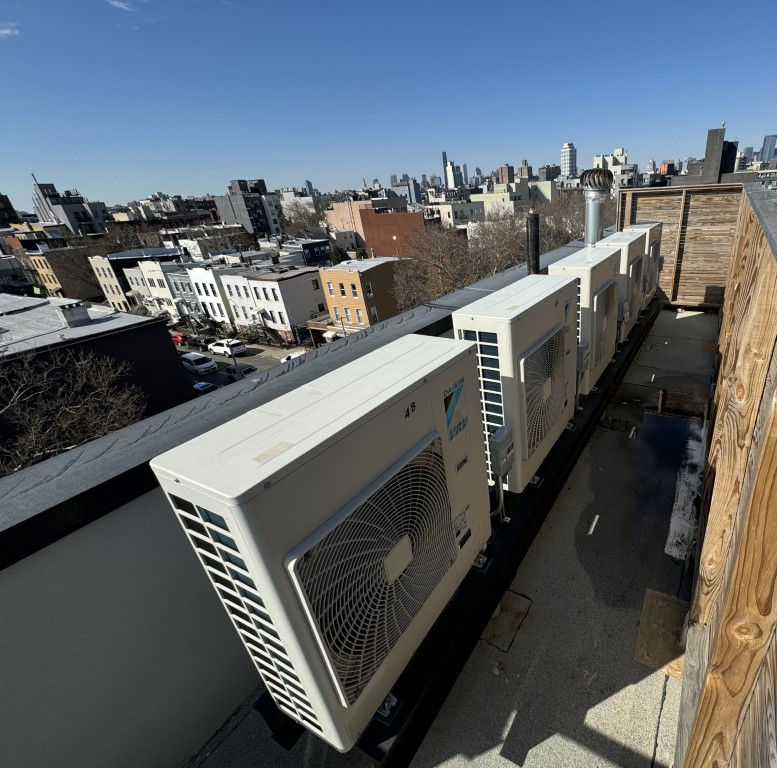When is an Certificate of Compliance Required in NYC - New York City? Formerly known as Equipment Use Permit - VC19 Affidavits
- Built Engineers

- May 2, 2023
- 4 min read
Updated: Mar 21
Did you receive an FDNY violation for failing to submit or provide a Certificate of Compliance? In New York City, the operation of certain service equipment is regulated under §28-116.4.1 of the NYC Construction Codes. This regulation requires obtaining a Certificate of Compliance (previously known as an Equipment Use Permit) before operating such equipment.

FDNY summonses like the one above are issued when HVAC equipment is inspected, and the required documentation is not provided. The cited violation references FC606.1, which outlines requirements for refrigerating systems under Section 606 of the Fire Code. Additionally, AC28-103.1 defines the jurisdiction of the NYC DOB and FDNY in enforcing building codes, including the FDNY’s authority over the proper posting of Certificates of Occupancy and Certificates of Compliance.
Section 28-116.4 details the requirements for signing off completed work and specifies which types of equipment require a Certificate of Compliance for operation. Summonses typically include further details about the specific equipment in violation.
TLDR; Only packaged HVAC units which are 3-Tons (36,000 BTU) or less and fit in a window or in a wall sleeve are exempt from the Certificate of Compliance.

In New York City, the operation of specific service equipment is regulated under §28-116.4.1 of the NYC Construction Codes, which mandates obtaining a Certificate of Compliance (formerly known as an Equipment Use Permit) before such equipment can be operated. This certificate is issued by the Department of Buildings (DOB) following the submission of a satisfactory inspection and testing report and the sign off of any issued permits.
Buildings manage FDNY compliance through permit accounts on FDNY Business, which require regular maintenance to remain valid. These permit accounts typically require periodic payments or inspections, and may have set expiration and renewal dates. Requirements and processes vary depending on the type of permit.
A Refrigerating System Permit is required to operate or maintain certain refrigerating systems. This permit applies to systems using Group A1, A2, A3, B1, B2, or B3 refrigerants, as well as those mounted on or suspended from a roof or ceiling, or floor-mounted systems with compressors of 5 HP or more. The permit costs $105 per compressor and must be renewed annually, with an FDNY inspection conducted before expiration.
Equipment Requiring a NYC Certificate of Compliance
The following types of service equipment require a Certificate of Compliance prior to operation:
Air conditioning systems (including cooling towers)
Ventilation systems
Refrigeration systems
Heating systems (excluding boilers)
Other types of service equipment are subject to inspections in accordance with existing procedures and do not require a Certificate of Compliance including:
Fuel-burning and fuel-oil storage equipment (including boilers)
Elevators, escalators, moving walkways, and dumbwaiters
These types of equipment have their own methods for inspection to ensure they comply with regulations and can be operated safely.
Exceptions to Permit Requirements
As per 1 RCNY §101-14, certain equipment installations are exempt from permit requirements:
Air Conditioning and Ventilating Systems: Voluntary systems serving only one floor that:
Do not use lot line openings for air intake/exhaust or equipment mounting.
Are not installed in public hallways, passageways, or stairways.
Do not reduce ventilation below code requirements.
Do not penetrate fire divisions, roofs, floors, or walls.
Packaged Air-Conditioning Units: Units not exceeding 3 tons capacity, installed in existing buildings (including window installations) and not part of an alteration requiring a permit.
Example: a 2-Ton (24,000 BTU) split system with a condensing unit on the roof and indoor air-handling unit penetrates a fire division, roof, or wall with refrigeration piping would require a permit to install and a Certificate of Compliance to operate.
Process for Obtaining a Certificate of Compliance
The procedure to obtain a Certificate of Compliance involves:
Filing: A registered design professional (Professional Engineer or Registered Architect) prepares the necessary construction documents and submits an application to obtain a permit.
Work: Remedial work, if any, is completed by a licensed contractor.
Inspection: A Special Inspection Agency conducts the required inspections and tests and certifies, on the DOB filing, that the work performed substantially conforms to the approved construction documents. Commissioning may also be required in certain circumstances to verify the performance of the equipment in accordance with the Energy Code.
Issuance: Upon satisfactory review, the DOB issues a Certificate of Compliance document, which can be printed from DOBNOW and must be securely posted on or adjacent to the certified equipment.
Letter of Completion: The project then proceeds to signoff which may include additional approvals depending on the nature of the project.
Resolving the FDNY Summons
The FDNY summons must be resolved to certify that the violation has been corrected. Steps to resolve the FDNY summons include the following:
Correction: Obtain the necessary Certificate of Compliance from the DOB.
Certification: Submit a Certificate of Correction Request (CCR) to the FDNY, including:
The FDNY Summons Record ID.
A copy of the Certificate of Correction.
Any other supporting documents.
The CCR can be submitted online via FDNY Business.
If you've received an FDNY Summons for failure to produce a Certificate of Compliance you may be required to appear for an OATH hearing and pay a penalty unless a Certificate of Correction can be provided within 35 days from the date the violation was originally issued.
Our engineering team can conduct a Certificate of Compliance investigation to determine the exact requirements for your equipment. In some cases, we may be able to recover Equipment Use Permits from older filings or help identify a more efficient path to resolution. If you’ve received a violation or need assistance navigating the compliance process, contact us today to discuss your options and ensure your equipment meets these requirements.






Comments